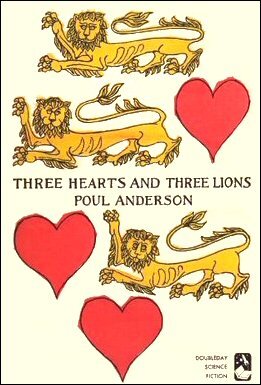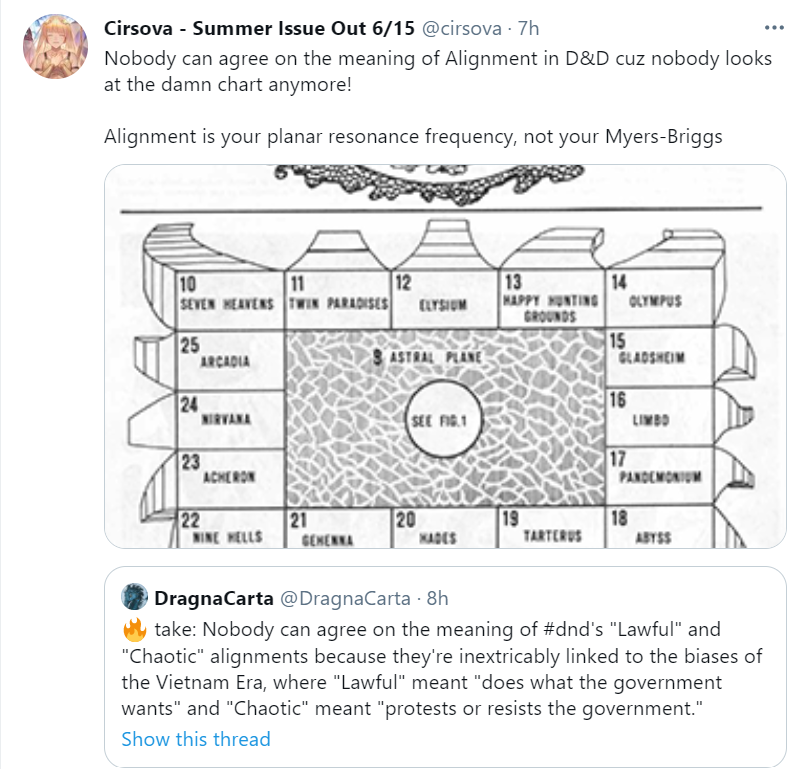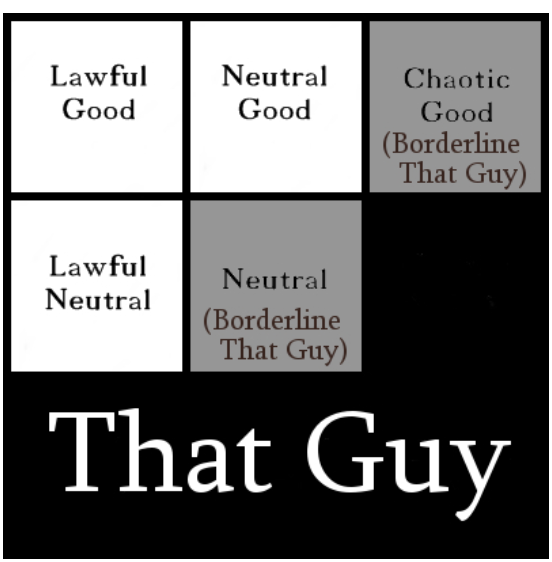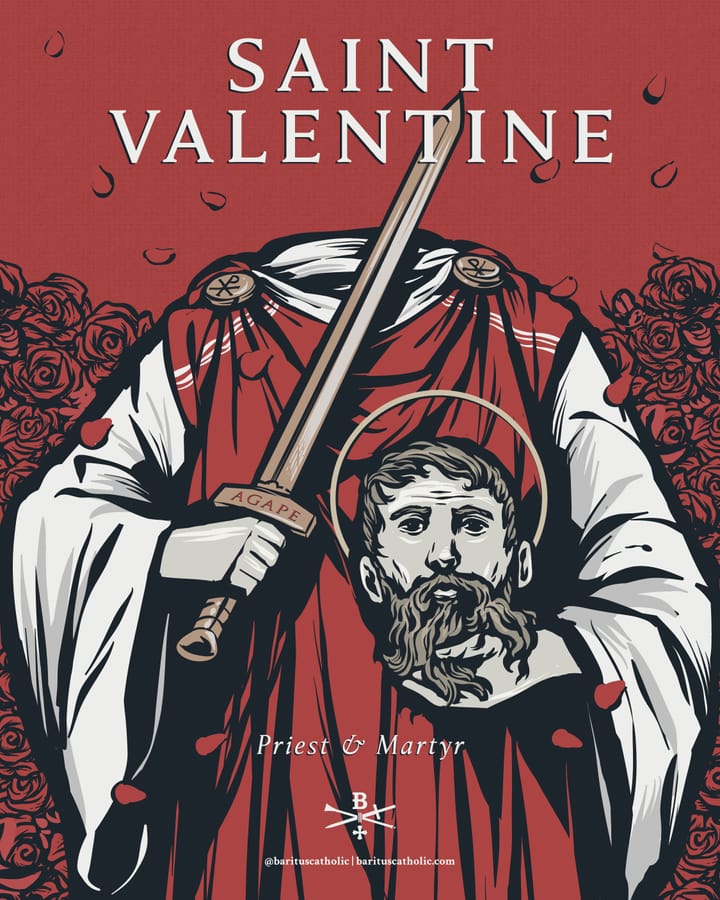The side you pick requires changes in behavior

In the post included in this last week’s Linkfest about the individualism [look at me!] of modern D&D, there was a link to another post on alignment in D&D. at the Methods & Madness blog. The perception of and playstyle in practice has changed a lot over forty plus years. I do agree that it is absolutely in line with Three Hearts and Three Lions [Amazon link] to see alignment as a tool for managing faction interactions, and even big Chainmail style battles.
However, I also think it is a mistake to try to divorce behavior and alignment in roleplay entirely. Which isn’t to say that I haven’t seen some [lots of?] problems with it, or read tons of examples of things getting out of hand. I suspect this is related to my thesis that D&D is a game invented by and for middle aged guys who were well-versed in history and fantastic literature. If the players are too young, or have had their imaginations cramped by only reading recent books, or don’t know enough facts about the world and the people who live in it, the odds of things going off the rails increase.
I’m not here to suggest ways to run this better in your game, as that isn’t quite my thing here. What I am going to talk about is the intersection of pulp fiction and moral philosophy, which probably seems like a complete non-sequitur to anyone who goes by the characterizations of the field used only by those who hate it.
I think the keys are this:
- D&D is a game, the realism or not of the simulation depends on how it plays at the table. Alignment as faction management works well.
- The players and the DM are on the same side. The DM might roleplay antagonists as part of the game, the DM is not fundamentally opposed to the players. As such, at most the DM might tell a player that their alignment is being changed by a persistent course of action, but policing behavior outside of enforcing the few class or race rules isn’t needed.
- D&D is neither improv theater nor a novel. Trying to impose those structures on it breaks it
So what does this mean in practice? Let’s turn to the Methods & Madness post:
The confusion between the concepts of "morals" and "teams" is the source of many arguments on alignment. For example, should a good-aligned creature slay an evil-aligned one in cold blood, just because it is evil? If alignment is a moral choice, probably not, but if alignment is a side in a cosmic war, it depends on what is best for your team.
…
One problem that using alignment both ways causes is that it might make you think that people with the same "morals" are on the same "team", which is strange in real life (where you would expect even good, honest people to bump heads and maybe even go to war from time to time), and only makes sense in very black-and-white settings, where Good and Evil are easier to define and recognize.
Yes, I actually do think that people with the same morals are on the same team, which an entirely different thing than good and honest people having a vigorous difference of opinion. Here is a real world example: the Dominican order and the Franciscans have been butting heads for seven centuries, approximately since they were both founded. It has occasionally gotten out of hand, requiring Papal intervention to get them to stop sniping at each other. But in any sense that matters, Franciscans and Dominicans very much espouse the same morality. I suspect what is going on is that people have confused morals with personality, which seems crazy but people keep proving me wrong:

Three Hearts and Three Lions was published in 1961, which was technically within the scope of the United States’ involvement in Vietnam, but would require quite a stretch to make literary sense. Three Hearts and Three Lions is part of a tradition going back to the chansons de geste, but if you don’t know anything about that, you might make facile Vietnam analogies instead.
I do think the comment from Cirsova about the Myers-Briggs personality test gets at the heart of it. If you think D&D alignment is like MBTI, then you might think it is an attempt to describe a cluster of stable behaviors. It isn’t. Much like my reflections on the Church in D&D, what you bring to the table with very much influence what you think is plausible. I approach morality as a Thomist.
Alignment has a very natural compatibility with Thomist moral philosophy. Morality in the Thomist tradition is very much about the end you trying to achieve, that you are aligning yourself with. For a Thomist, virtue or vice is what you habitually do. And picking a side in a cosmic conflict exerts a very real influence in what you tend to do. The game as originally invented was very much about killing monsters and extending the scope of civilization within the game world, naturally aligned with Law against Chaos. The side you pick, what you align with, will eventually push your character’s behavior in a direction that matches up with your side.
Alignment as personality, no. Alignment as a vector, as a final end, yes!
I don’t see Law and Goodness as identical in our world. Only in Christ do peace and justice kiss. For the rest of us, those things are correlated at best. Which is why it makes some sense to split up the chart into two axes, but I don’t know that you have to. The things are definitely related. Unless you really and truly think that Law is a synonym for stasis or or preservation or some other foolishness. Which is I think why this chart exists:

If you want to see the essential madness of rejecting this approach, Eric Diaz at Methods and Madness links to Matt Finch at Swords and Wizardry, who is just wrong on the subject.
A moral tendency, on the other hand, is entirely a matter of personal choice, and often has nothing to do with your standing in the eternal war of Law and Chaos. Morality is a human construct, and one that is shared by many of the gods, but it is irrelevant to Law and Chaos, which are amoral forces of preservation and ruin.
Matt Finch clearly doesn’t understand good and evil at all, and can thus be disregarded:

…that Good-Evil gauge is your role in human-scale morality, not your role in the cosmic battle. Indeed, it is often the reason why many of the pawns of Law and Chaos can be “unreliable,” since they skitter off on moral issues. Many players have observed that the forces of Law and Chaos are both somewhat genocidal, and I think this is a good way of portraying cosmic struggles both in swords & sorcery pulp fiction and in a game that depends on lots of excitement and combat. On the other hand, it misses the subtler sort of issues that add depth to the game (and specifically in this case, to a campaign setting). Perhaps a paladin actually has no particular tendency toward good; interesting, that’s Solomon Kane. Druids can suddenly be meaningfully divided among the ones who burn people in wicker baskets and the ones who offer kindly advice to strangers from their roadside flower gardens.
Anyone who thinks Solomon Kane has no orientation to the good is a fool. Kane is God’s vengeance personified. This position only makes sense if you think that alignment equals personality, and that Holger Danske has a different personality than Solomon Kane so they can’t be the same. Or perhaps if you are so unlettered in philosophy to think that the seventeen planes on the alignment chart are some kind of serious cosmology and not a tool to sell more books. This is where the distinction between GM Gary and TSR Gary comes in. What made a great game, and what allowed TSR to ship product started to diverge over time.
The game as a game, the ultimate synthesis of wargames and pulp literature and table experience, is a great hobby, but only a mediocre product. The game absorbed the medieval Christian mindset inchoately. The game is unbalanced and humancentric. It assumes that Good will win in the end, and the game rules are biased in that way. Fantastic literature very much has the same bias, for the same reason. The product did some other stuff, and lots of people never figured that out.



Comments ()